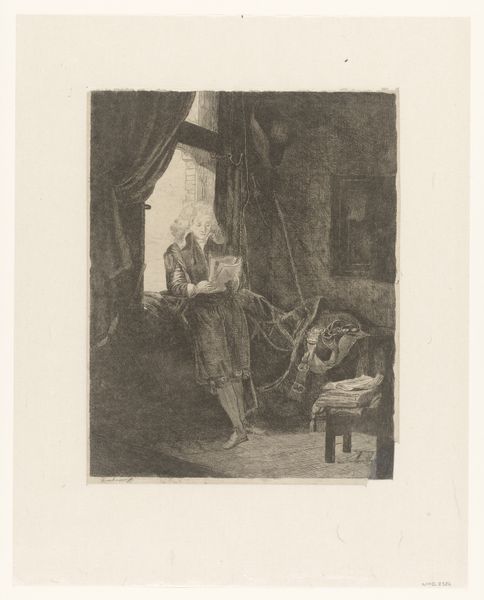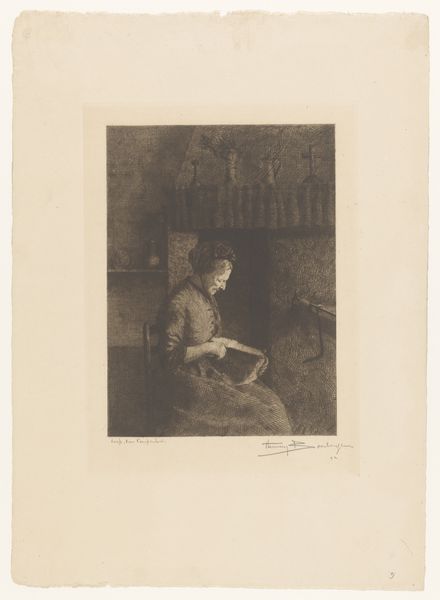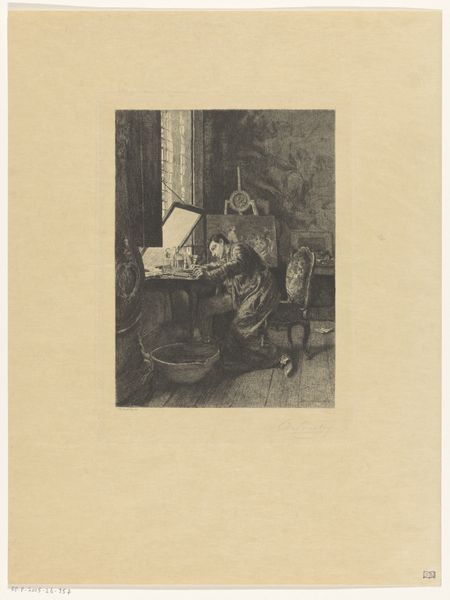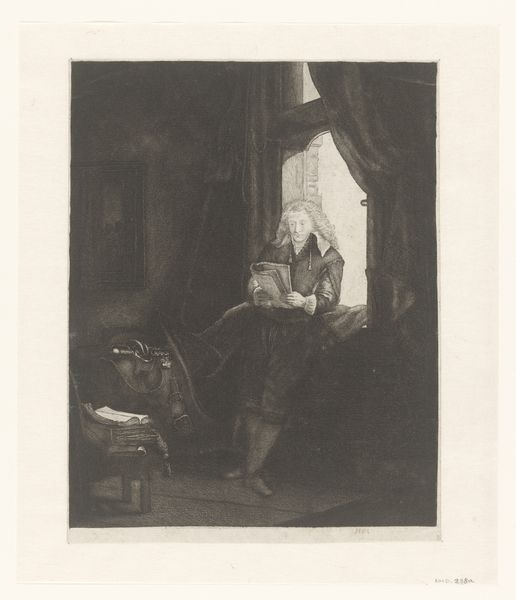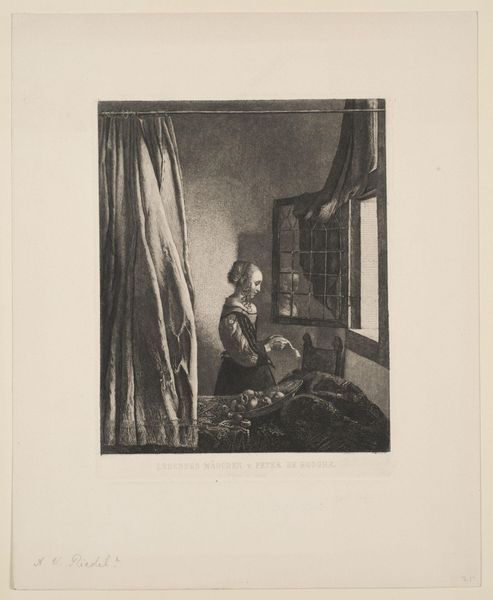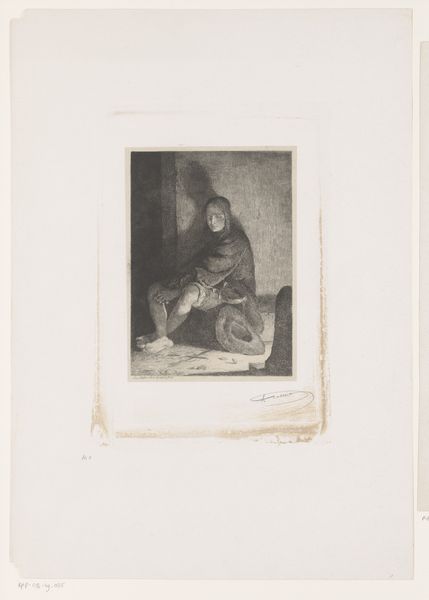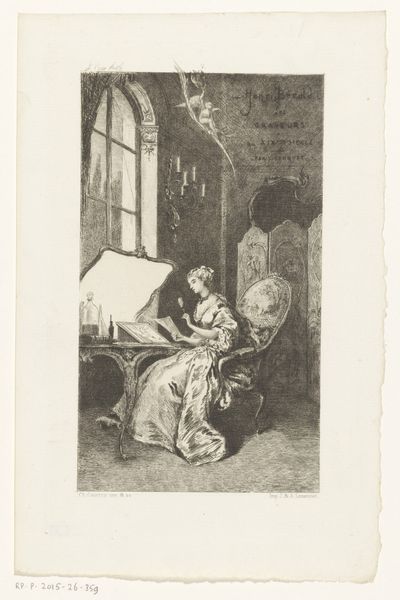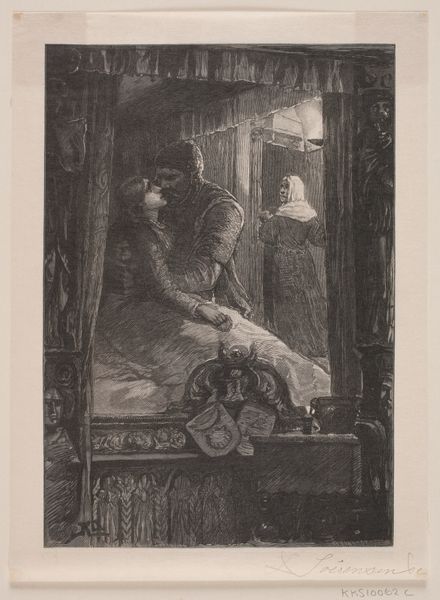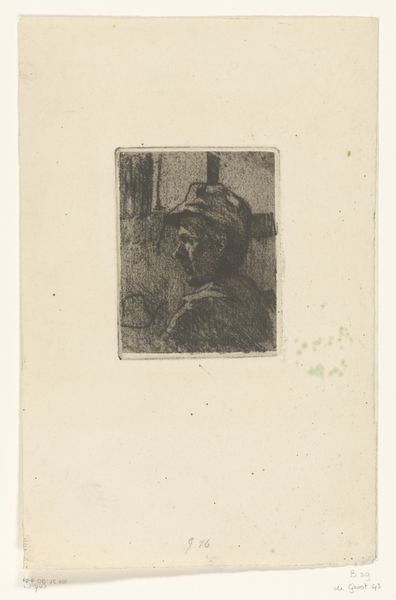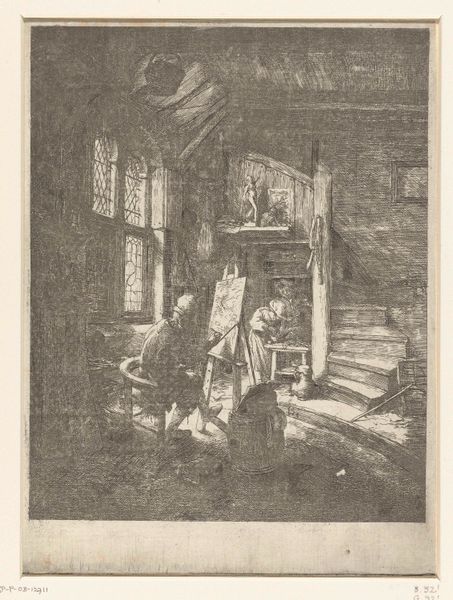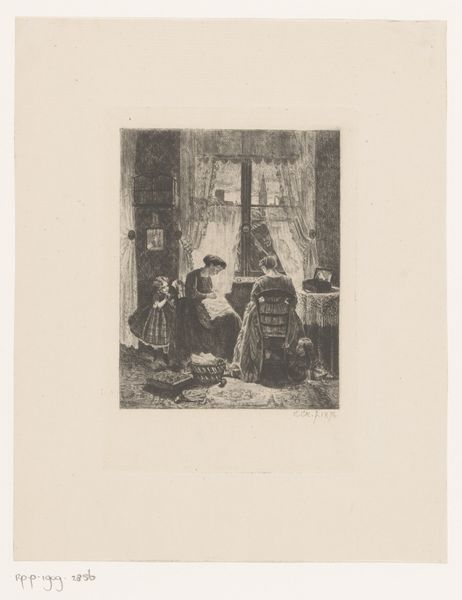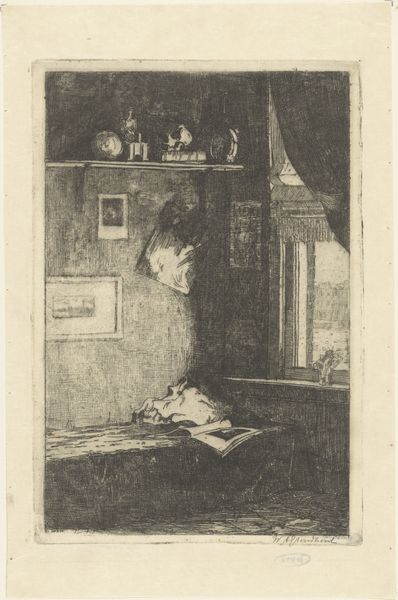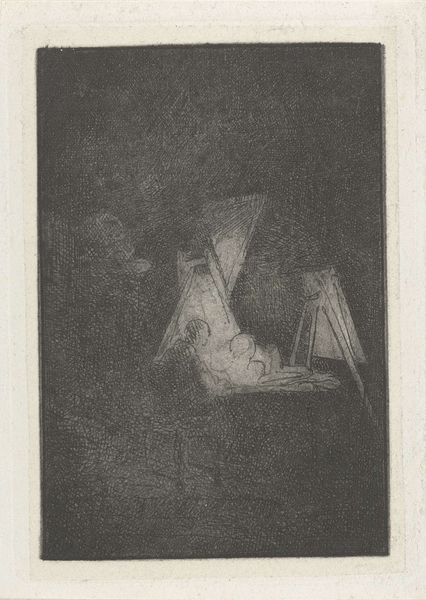
Dimensions: height 285 mm, width 205 mm
Copyright: Rijks Museum: Open Domain
Pierre François Basan created this print of Jan Six sometime in the 18th century, using a technique called etching. This process involves coating a metal plate with wax, then scratching an image into the wax to expose the metal. The plate is then submerged in acid, which bites into the exposed lines, creating grooves. Ink is applied to these grooves, and the plate is pressed onto paper to transfer the image. Notice the fine lines and intricate details achieved through this method. The material qualities of the metal plate and the corrosive action of the acid define the print’s aesthetic. Etching allowed for the relatively easy reproduction of images, fitting into a burgeoning print market that democratized art. It also involved a fair amount of labor, from preparing the plate to the final printing. Understanding the material and processes behind art like this helps us appreciate not just the image, but also the world of making and consumption in which it was created.
Comments
No comments
Be the first to comment and join the conversation on the ultimate creative platform.
